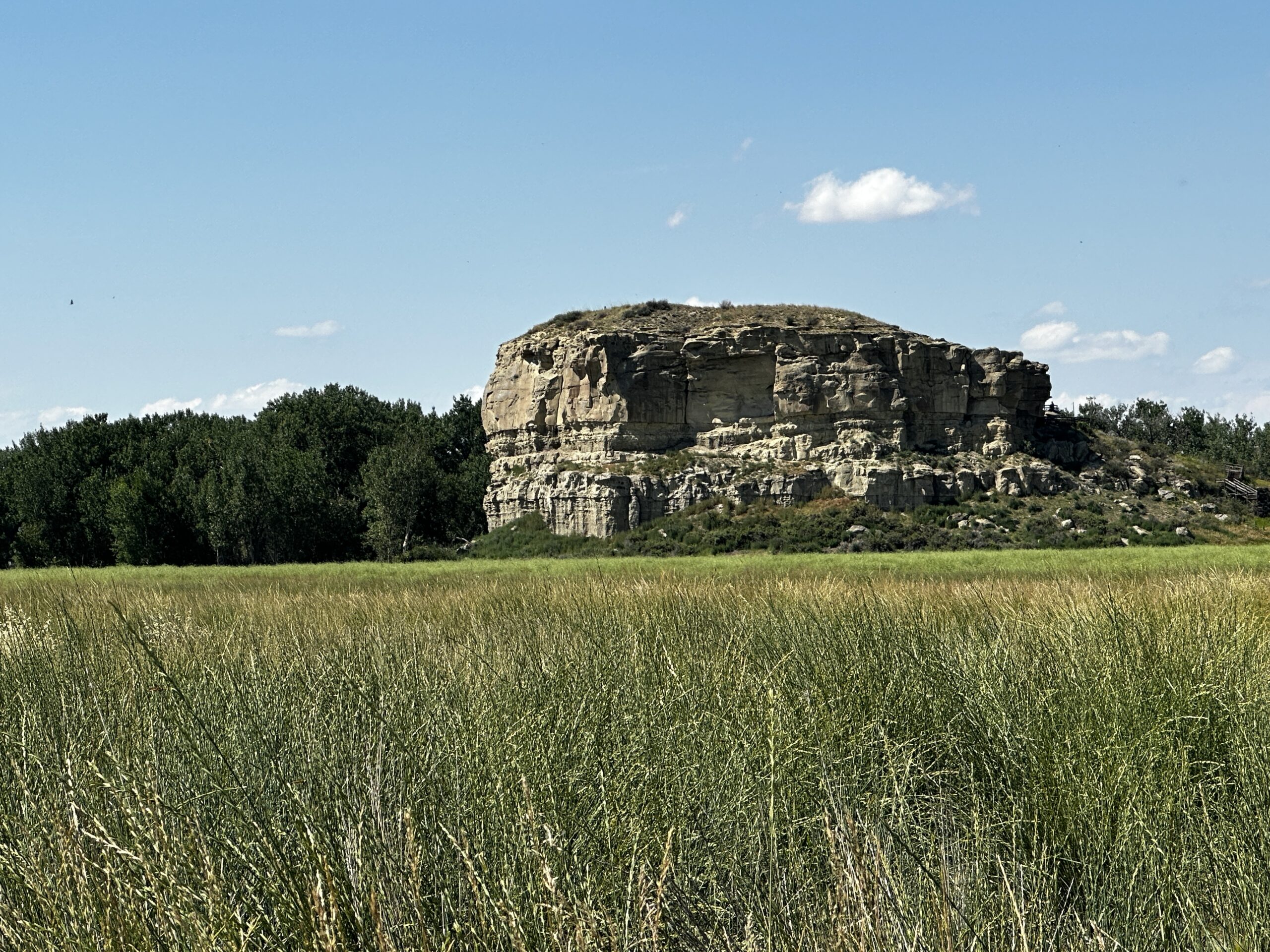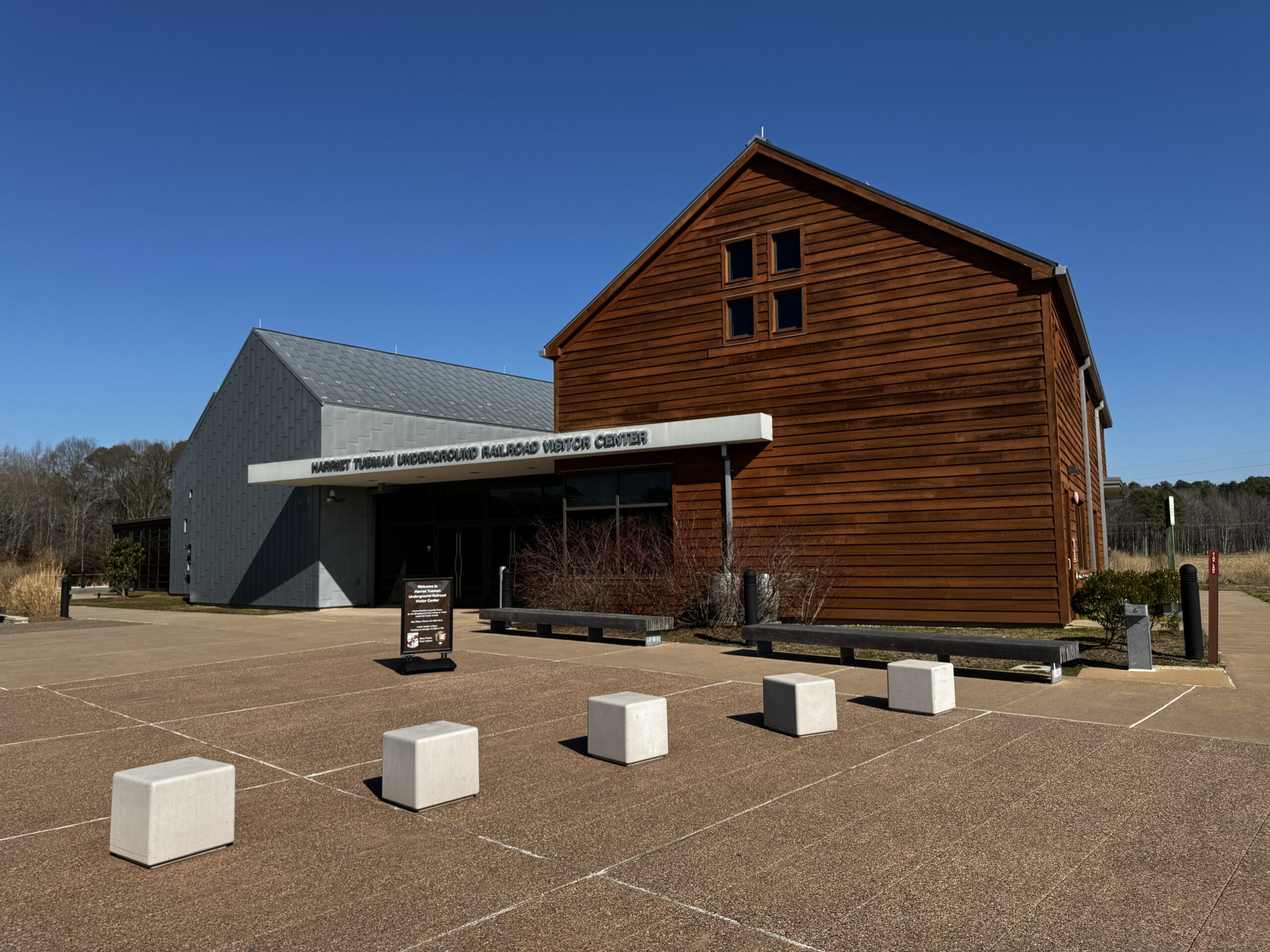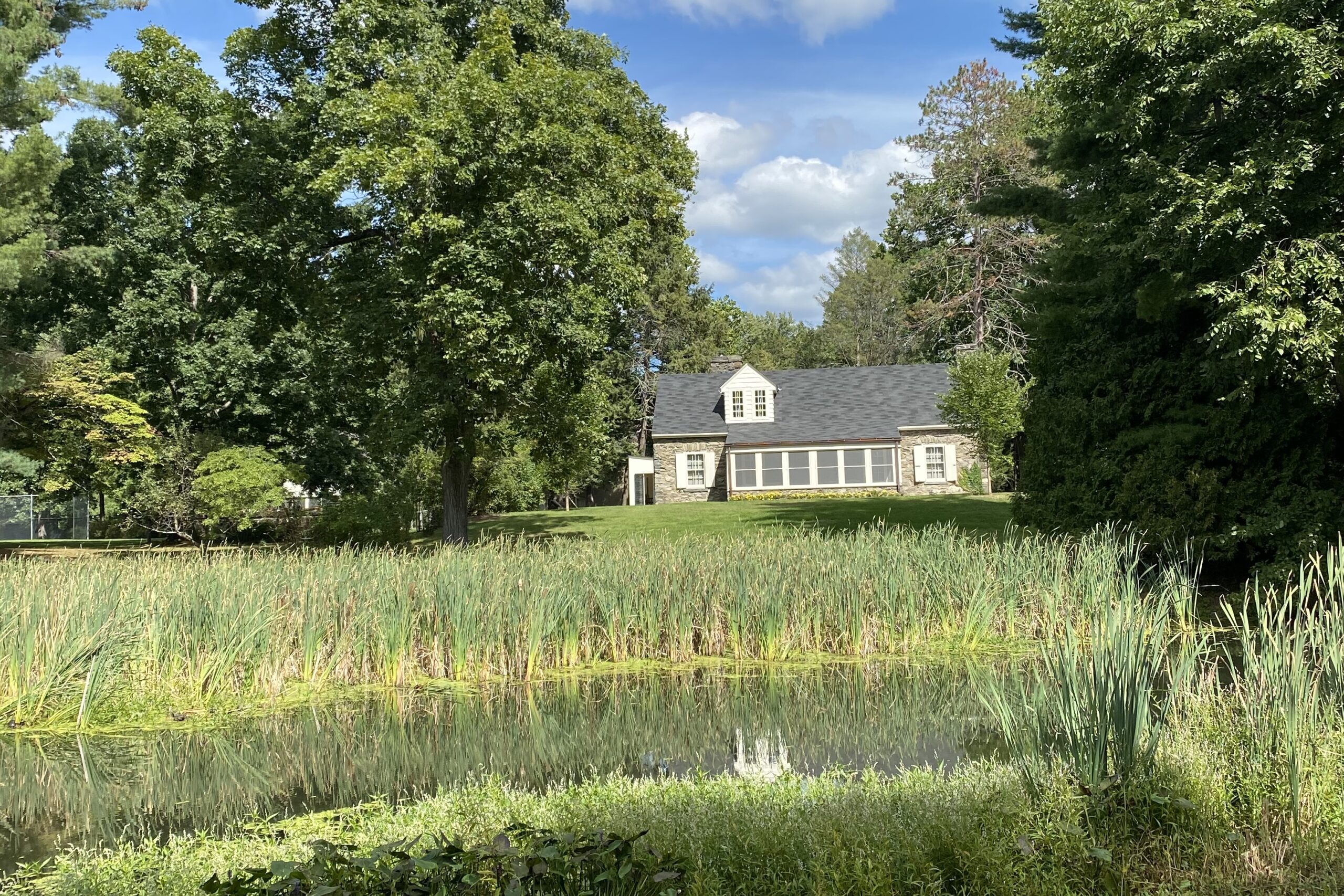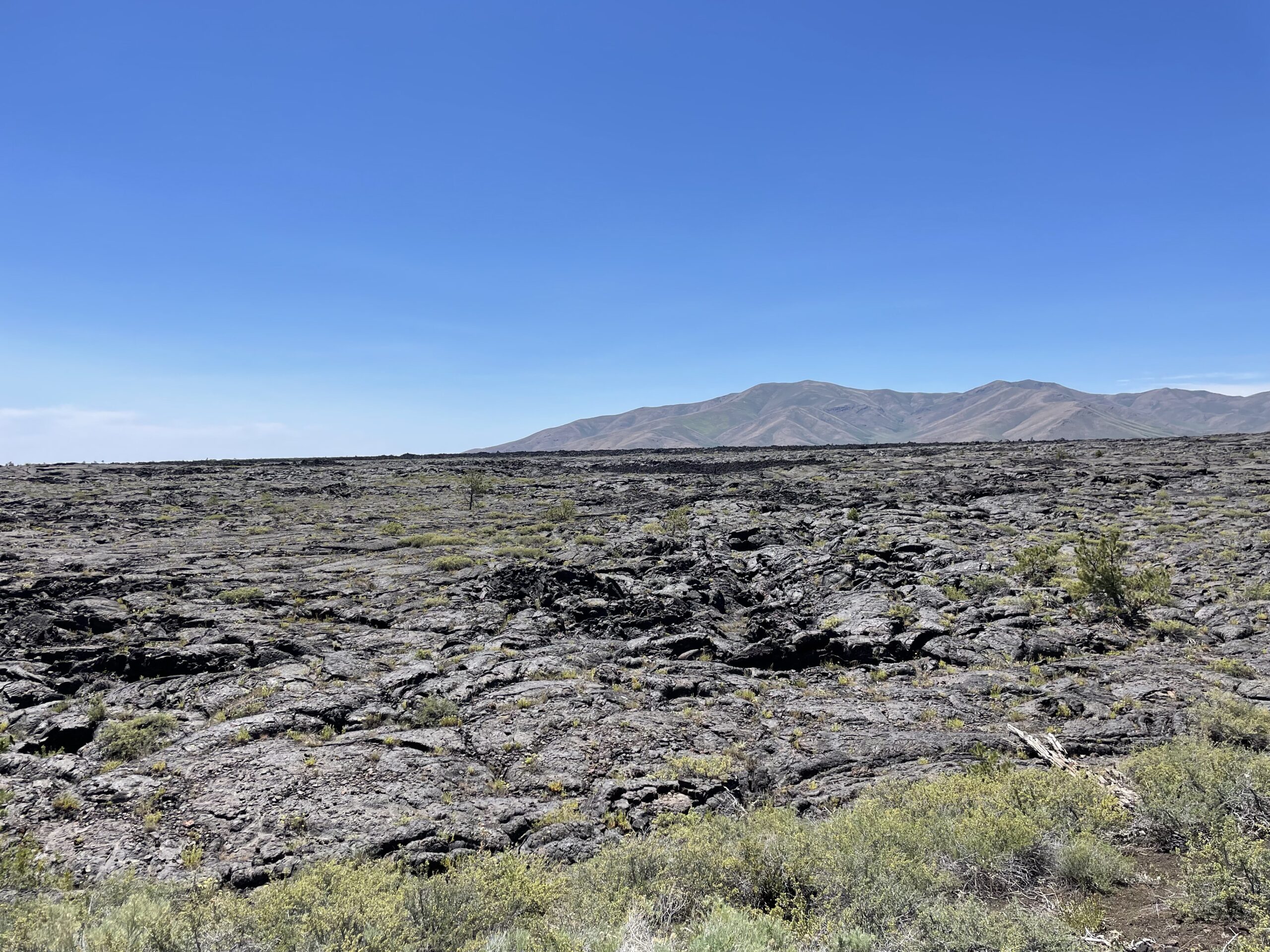
Park Stats
Park established: May 2, 1924 (National Monument)
President in office: Calvin Coolidge
Park size: 750,000 acres
Highest elevation: 7729 ft (foothills of the Pioneer Mountains)
Visitors: 237,774 in 2022
Fun facts:
-
16.2 miles of hiking trails
-
Nocturnal animals include packrats, skunks, foxes, bobcats, mountain lions, bats, owls and more
-
Some animals that are only found at Craters of the Moon include Great Basin pocket mouse, yellow pine chipmunk, and lava beetles
-
750 different types of plants
-
2017 received an International Dark Sky designation
I visited Craters of the Moon in June of 2021. At this point, I had been on the road for 5 months. The process of reserving a campsite, getting to locations, setting up, exploring, and taking camp down, had become routine. Or so I thought. This was yet another different experience. And with it came the stress and exhilaration of doing something new.
A stop at Craters of the Moon was part of a loop from Big Sky, Montana to Crater Lake up to Olympic National Park, and back to Big Sky. It was going to take 4-5 weeks to do everything that I had planned along the route.
Craters of the Moon campsites are first come first serve. That always makes me anxious. Especially in the summer and not being familiar with the area. Thanks to all of the other great campsite apps, I found a campground in the Sawtooth Forest. It was about a 90-minute drive from Craters of the Moon, but I’d come to learn that finding a site, staying for a few days, and driving an hour or two to visit parks and trails was well worth it. It was always nice to feel like the campsite was a home, not a pitstop.
On the day I designated for Craters of the Moon, I set out very early. The summer heat was sweltering, and from the pictures, I knew I was going to do better to get going early.
When you arrive at Craters of the Moon, the Visitor Center is there to greet you. This is your stop for information, maps, bathrooms, water refills, National Park Passport Stamps, and more. Across the street, you’ll see the campgrounds. From there you head into the park and get on Loop Road. This one-way road will take you past every trailhead.
My first stop – Inferno Cone. The hike isn’t nearly as intimidating as the name may lead you to believe. It is a big straight hill to start, but at the top you have an amazing view of the park! When I was there, people of all ages and skill levels were on the trail. I think the key is to take it at your own pace.
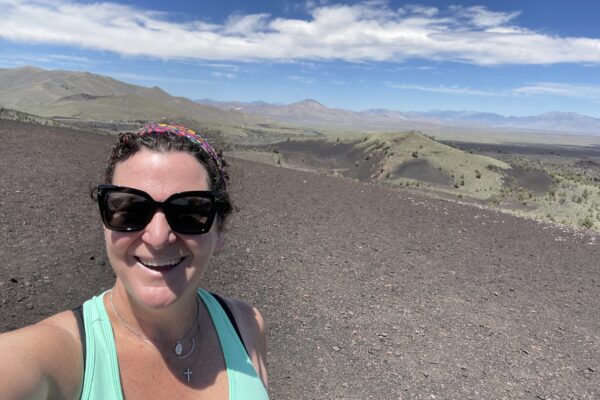
My next stop was Tree Molds Trail. This 2-mile out-and-back trail was a fascinating look at the impressions trees left after the lava flows. It was also on this section of the trail that I felt like I could experience what the park was like. I remember being mesmerized by the colors and shapes, by the unique terrain. As I was writing this post, I went back to read my journal entries from this day. I kept talking about how hot I was. I was so thankful to have my car to escape to between trails. Otherwise, there was no relief from the sun.
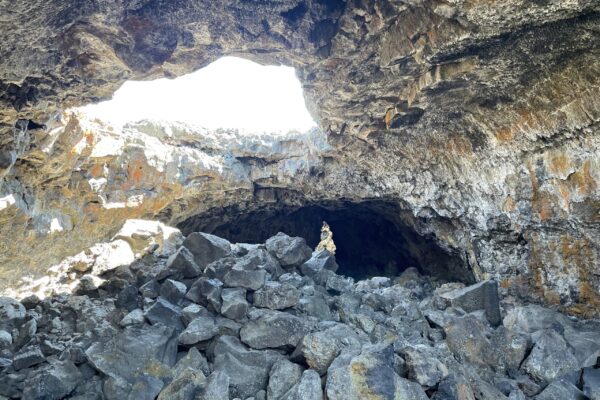
My last stop on Loop Road was the caves. From the parking lot, you’ll walk along a boardwalk over the lava flow. The lava tube I stopped at required walking down a flight of stairs and then making your way through the tube. Some of the holes let sunlight in, but if you go, take a headlamp. It was really impressive to see another way that the lava flow altered the landscape.

It was a great day trip from my campsite. I saw what I wanted to see and felt like I fully experienced the park.
I got to chat with a Ranger from Craters of the Moon National Monument. Check out that episode of The Parks Podcast.
Basics
Location: Arco, Idaho
Parking: Parking is available at the Visitor Center and also off Loop Road all the start of the hiking trails.
Bathrooms: Available in the Visitor Center and a few of the trailheads
What to wear: Be prepared based on the season and activity you plan to participate in. In the winter it can be bitter cold and snowing, but when you get moving you can warm up quickly. Plan layers. Summer is super hot. You’ll want some protection from the sun.
What to pack:
- Water! Water! Water! You can fill your water at the Visitor Center. Since you drive from trailhead to trailhead, this is an easy park to take excess water and then refill your jugs from the car.
- Bring snacks and meals, especially those items that will replenish electrolytes.
Pet regulations: Pets are allowed at Craters of the Moon, but not allowed on any of the trails. Remember they must be on a 6ft leash at all times. They do have a Bark Ranger program, so be sure to sign-up your dog.
*visit the park website for any updates or additional information to guide you on your journey

